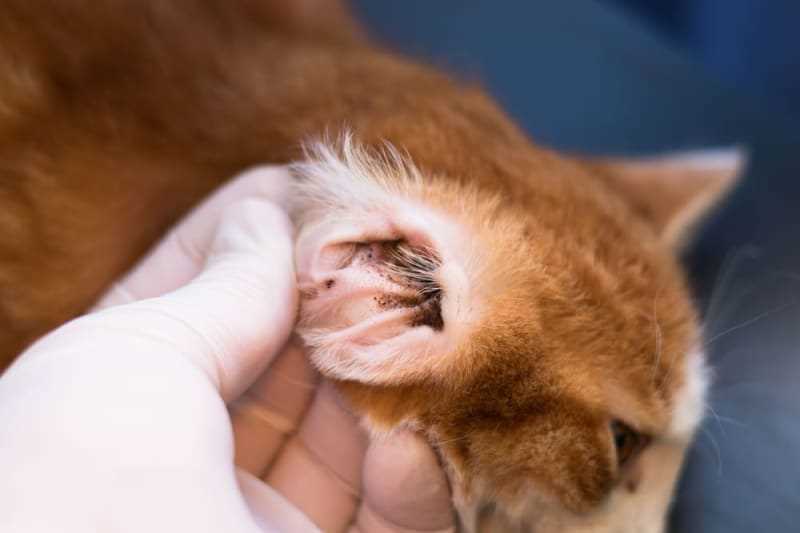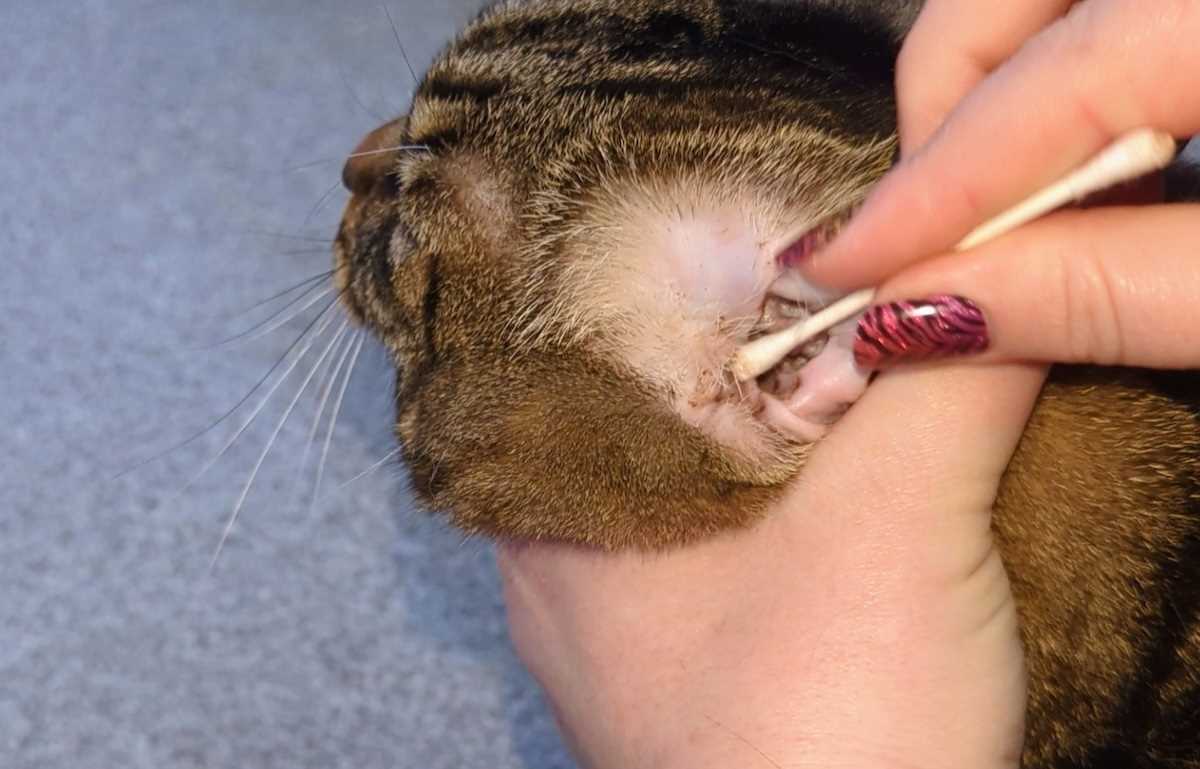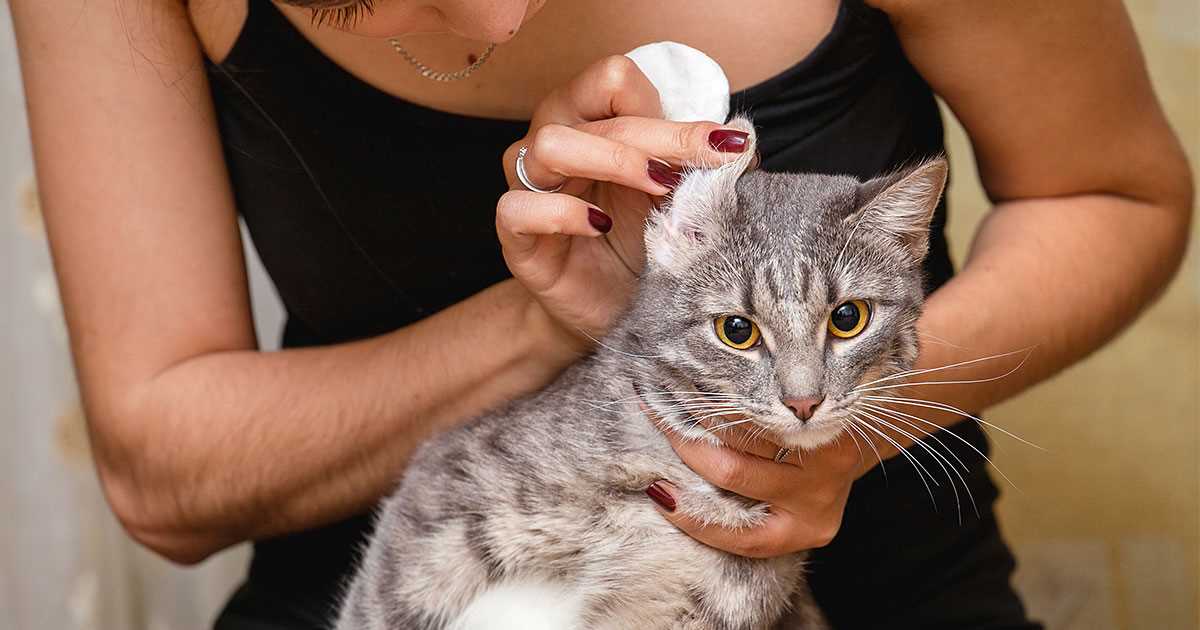

Using a gentle, vet-approved ear cleanser is crucial for maintaining optimal hygiene in those adorable floppy structures. Gather cotton balls or pads to absorb the solution while avoiding any sharp objects that might cause harm. Position the feline in a comfortable space, ensuring they feel secure during this process.
Apply a few drops of the cleanser directly into one auditory canal. Massage the base of the ear gently to help the liquid distribute thoroughly. This action assists in dislodging dirt and wax buildup, making it easier for the solution to work effectively.
After a brief moment, allow the kitty to shake its head. This natural instinct aids in removing excess fluid along with any loosened debris. Follow up by wiping the outer area with a cotton pad, ensuring a clean finish without pushing any residue deeper.
Regular checks and cleanings, ideally once a month, help prevent infections and discomfort. Always observe for signs of irritation or unusual discharge, and consult a veterinarian if any concerns arise. Keeping those adorable auditory structures in check ensures a happy and healthy feline companion!
Identifying Signs of Ear Issues in Cats
Pay attention to any signs of discomfort or irritation around the auditory area. Frequent shaking of the head or scratching at the sides may indicate a problem. Observe the presence of unusual discharge, which can vary in color and consistency. A strong odor emanating from the vicinity can also signal an underlying issue.
Check for redness or swelling in the outer canal. If the skin appears inflamed or sensitive to touch, it may require immediate attention. Changes in behavior, such as increased irritability or withdrawal from social interactions, often hint at discomfort related to auditory health.
Monitor grooming habits; excessive grooming of the head or face could be a sign of irritation. If there’s a noticeable change in balance or coordination, it could suggest a more serious condition affecting the inner structures related to hearing.
Regular observation is key. Early detection can prevent complications and ensure prompt care, keeping everything in balance. Always consult a veterinarian if any concerning symptoms arise. Being proactive supports overall well-being and comfort.
Gathering Necessary Cleaning Supplies
Start with a gentle ear cleaner specifically formulated for felines. Look for products that are non-toxic and designed to dissolve wax without causing irritation.
Include cotton balls or gauze pads for applying the solution. These should be soft and absorbent to avoid scratching sensitive skin inside the auditory canal.
Having treats on hand is a great way to create a positive experience. Choose something your feline enjoys to reward good behavior during the process.
A soft towel is handy for catching any spills and keeping the environment tidy. It can also provide comfort if your furry friend feels anxious.
Finally, a pair of cotton gloves can help prevent any transfer of dirt or oils from hands to the ears, ensuring everything remains hygienic.
Safely Restraining Your Feline During the Cleaning Process

To ensure a smooth experience while addressing ear hygiene, proper restraint is key. Here are effective methods to secure a kitty during this task:
- Use a towel: Wrap the body snugly in a towel, leaving the head exposed. This limits movement and provides comfort.
- Partner up: Have a friend assist. One person can gently hold the cat while the other performs the cleaning.
- Choose the right space: Opt for a calm, quiet area free from distractions. This helps keep the feline relaxed.
- Employ a pet harness: For particularly squirmy companions, a soft pet harness can keep them secure without causing stress.
- Practice patience: Allow the kitty to acclimate to the process. Gentle strokes and soothing words can ease anxiety.
Always ensure that the cleaning supplies are within reach to minimize any unnecessary movements during the procedure. Aftercare is equally important; maintaining a healthy diet can support overall well-being. For instance, consider cat food for cats with feline herpes to promote good health.
Remember, keeping calm is vital. If the kitty becomes agitated, take breaks and try again later. Regular checks can help catch any issues early on. Also, a balanced diet contributes to overall health. For more insights on nutrition, explore where are proteins found in plants.
Step-by-step ear cleaning technique
First, ensure a calm environment. Place me on a flat surface or table, preferably where I feel secure.
Next, gently hold my head, stabilizing it with one hand while using the other to apply a few drops of the cleaning solution into the ear canal. Avoid overfilling.
Massage the base of the ear for about 20-30 seconds. This helps the solution break down any debris or wax.
Using a soft cotton ball or pad, wipe the visible parts of the ear gently. Avoid deep insertion to prevent injury.
If there’s stubborn wax, dampen a cotton swab with the solution, and carefully clean the outer areas, ensuring not to push anything deeper.
After cleaning, reward me with a treat or extra petting to create a positive association with the process.
Repeat on the other side, following the same steps for consistency. Regular checks can help maintain ear health.
Post-cleaning care for your feline’s auditory health

After the cleaning session, it’s important to monitor for any signs of discomfort or irritation. Look for excessive scratching or shaking of the head, which could indicate lingering issues. If the behavior persists, consult a veterinarian.
Keep the environment calm and quiet for a few hours post-cleaning. This helps in reducing stress and allows for recovery. Providing a cozy spot for relaxation can aid in soothing any potential anxiety.
Maintain regular checks on the ears weekly to ensure cleanliness. This prevents build-up and helps in early detection of any emerging problems. Use a gentle approach during these inspections to keep the experience positive.
Hydration is key. Encouraging water intake supports overall health, including the skin and ears. Fresh water should always be available to aid in general wellness.
Consider an appropriate diet that promotes healthy skin and coat. Omega fatty acids are beneficial for skin health and can contribute to overall ear condition.
In case of any unusual discharge or odor, refrain from self-treating and reach out to a veterinary professional. Prompt attention to changes can prevent further complications.
| Observation | Action |
|---|---|
| Excessive scratching | Consult a vet |
| Shaking head frequently | Monitor closely |
| Discharge or odor | Seek veterinary advice |
| Normal behavior | Continue regular checks |
When to consult a veterinarian for ear problems

If any signs of distress occur, it’s time to seek veterinary assistance. Persistent scratching, shaking, or tilting of the head indicates discomfort that shouldn’t be ignored. A foul odor, discharge, or excessive wax buildup often points to infections or other serious issues needing a professional’s evaluation.
Unusual changes in behavior, such as increased aggression or withdrawal, can also signal underlying health concerns. If the cleaning routine fails to alleviate any symptoms, do not hesitate to consult a veterinarian for a thorough examination.
Additionally, if symptoms persist for more than a few days despite home care efforts, professional intervention is necessary. Regular check-ups can help catch potential problems early, ensuring overall well-being. Trusting a vet’s expertise is crucial when it comes to health matters.








